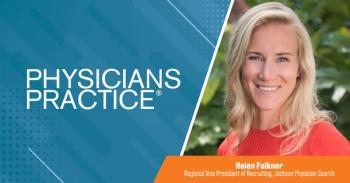
Three ways healthcare facilities are rebounding from COVID-19
Leaders from several organizations explain how they’re meeting the needs of their patients and employees.
The impacts of COVID-19 on healthcare have been far reaching with no immediate end in sight. The stresses this pandemic have put on medicine, however, haven’t changed the medical needs of millions of Americans. As elective care starts to return, we spoke with several organizations around the country to see how they’re meeting the needs of their patients and employees.
Telehealth is becoming a legitimate tool
The rise of telehealth is an unexpected benefit from the crisis and many facilities have shifted from no virtual appointments to making it a regular part of their practice. One unique use of telehealth came from
“In a rural area it’s tough because internet capabilities are really poor in many of our areas. But we’re thinking right now about remote sites,” said Putnam. “So, if I’ve got a medical assistant and a great internet connection, can a patient visit there instead of going to their primary care physician? I mean, other than the physician not being physically there, my technician or my medical assistant’s there who can draw blood, get vital signs, position the camera appropriately to get an image of an ear or throat or something else. There’s a lot of stuff where we met flat resistance beforehand, now we know it works, so how do we optimize it?”
Regaining public trust
One of the biggest issues with starting elective procedures is letting patients know that it’s safe for them to come back to the hospital or clinic.
“I believe patients and consumers are going to be cautious to step into a hospital. It’s already unsettling for them, so I think perception is really going to hinder the things we do in healthcare during this pandemic.”
To help regain patient confidence, they’ve been posting on Facebook and other social media outlets outlining what patients can expect when they come in. They’re also providing patients with masks if they need them.
Dr. Roth found that while his facilities were ready to ramp back up, patients weren’t ready to return. The association started a series of public service announcements with local media outlets to reinforce that it’s safe to come back and to not put off needed care. Communication has been key in building patient confidence and getting them to return, Roth said.
Better employee engagement
With layoffs, furloughs, and a pandemic, this is as stressful a time for healthcare workers as it is for patients. Maintaining clear communication with employees is key—keeping them updated on what is going on will help to calm fears. Creating more flexibility during this time is also important to keep your employees engaged.
At CompHealth, we found we needed to communicate more often than we were used to. The CEO of our parent company implemented weekly video chats with the entire company as well as sending out regular messages about the status of our business and working from home.
Whether you’re meeting in person or virtually, it’s important to create avenues to both share information and receive feedback from employees.
Healthcare facilities are implementing similar efforts. Austin Gillard said. “I feel like I’ve increased my daily presence through department rounding dramatically. I’m out on the floor more seeing how everyone’s doing, just for their mental health, because I feel like it’s not only challenging for them at work, but their lives have changed. When I talk with our team members, everyone tries to seem happy. A lot of them aren’t used to having their kids home as school has moved online, so they’ve had to adjust their own lives.”
Whether you’re meeting in person or virtually, it’s important to create avenues to both share information and receive feedback from employees. Surveys or anonymous comment forms on your intranet are another way to keep the pulse of your employees and learn how they’re handling the pandemic, their work, and their personal lives. Listening and implementing changes based on what you’re hearing will help keep your employees engaged in their work while staying focused on your patients.
About the Author
Newsletter
Optimize your practice with the Physicians Practice newsletter, offering management pearls, leadership tips, and business strategies tailored for practice administrators and physicians of any specialty.




